My Perfect B2B SaaS Sales Deck Is 14 Slides Long
What’s wrong with the following statement?
“John Doe has been a B2B buyer for X years, he’s seen hundreds of SaaS presentations, and these are his tips for the perfect sales deck.”
. . .
The issue lies in who is advising on a perfect slide deck. Just because I have been buying shoes my whole life does not make me a shoe expert. John Doe may know how he prefers a slide deck, but can he speak for all buyers?
Search Google for “The perfect B2B Sales Deck” and you’ll find a collection of results that often start the same way. A buyer with multiple years buying… not selling.
While these buyers are coming from a good place, they lack the experience of someone like me, who has presented dozens of SaaS slide decks to audiences large and small.
Today, I’ll share my tips on the perfect slide deck with you.
And the best part? It’s only 14 slides long.
Preparation
You need to complete a few essential tasks before you dive in.
Rushing immediately into PowerPoint and running to put your agenda together will lead you down a windy road. You can make creating the slide deck a much more linear and systematic process with a clear plan.
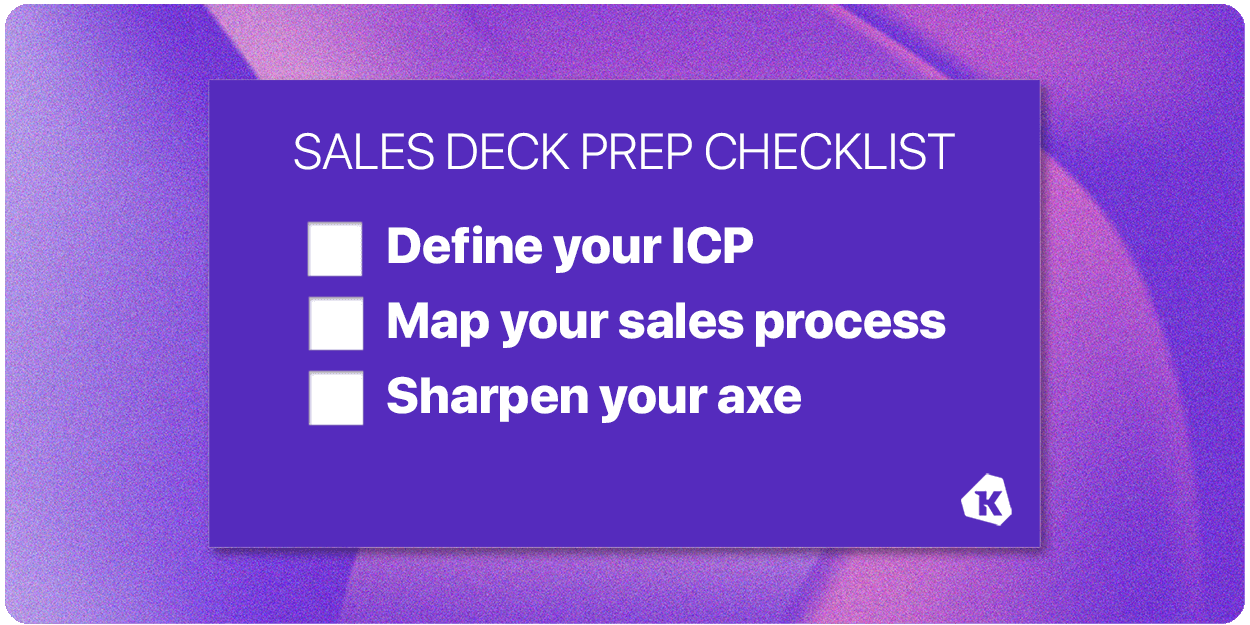
Task 1: Define your ICP
You can’t build a great deck until you know who you will be presenting it to. This takes us to our first task: defining your Ideal Customer Profile (ICP).
There are a few things to note when defining your ICP. Try starting with these initial questions:
- What are the characteristics of your ICP?
- What does the life of your specific users look like?
- What are the needs of a user of your solution?
- How can you solve those needs?
Luckily for all of us, once these initial questions are answered - you can pretty much create a universal slide deck. As long as your ICP is consistent, you’ll barely need to alter your slide deck, if at all.
Throughout my career, I’ve heard time and time again that you need to change your slide deck for every presentation.
They say, “Different organizations may have different needs for you.”
While this can be true, it’s neither scalable nor provides you with a platform to be your best. Imagine how poor Broadway shows would be if they put on a different performance for every audience. It can be avoided if you have that clearly defined ICP. After all, your goal is not to sell to everybody; your goal is to sell to your ideal customer.
If you stick to selling to your ICP, then many of your customers will be in similar situations, and you can use that to your advantage by being able to repeat your exact sales process… and hence your same slide deck. Once you sell to one of them, you can sell to all of them. Better yet, they can sell you to each other!
Much of the buying decision will happen behind closed doors without your presence. This means you need to create an internal seller who will be present in these sessions to make your case. You can do this by creating your slide deck directed exactly at the user who will be using your system.
This creates a connection between you and what we will call your “champion.” Without a clear champion, you lack a presence in those internal meetings. Once you convince the main player in the game (the person who will truly benefit from your software) that they will benefit from your solution - they will advocate on your behalf.
Your champion will probably be the one requesting a piece of the budget and will negate any critics when presented. They will do this because your project becomes their project at a certain point.
Your sales deck needs to establish the champion, excite them, and it needs to communicate a consistent message across viewers. That way, everyone is talking from the same vision. Your goal is to seed a simple value proposition that is easily spread and discussed internally.
Task 2: Map your sales process
It is surprising how many small companies don’t have a straightforward sales process to follow. They all have the first few steps: lead generation, first call, and second call. But once the prospect asks for a second presentation or session with additional stakeholders, they are thrown into the unknown and show up without a plan. Worse, they get asked for a demo and treat that as the next step.
It’s not that having a well-defined sales process will influence your sales deck all that much; it’s that a lack of a well-defined process will cause you to introduce unnecessary content.
So, you’ll need to map your sales process: from initial contact to signature. The best way to do this is to create a map with the ideal customer in mind. While the plan will often change to align with how the customer wants to buy, if you know what your ideal customer and ideal sale look like, you can confidently know that what you share will be familiar.
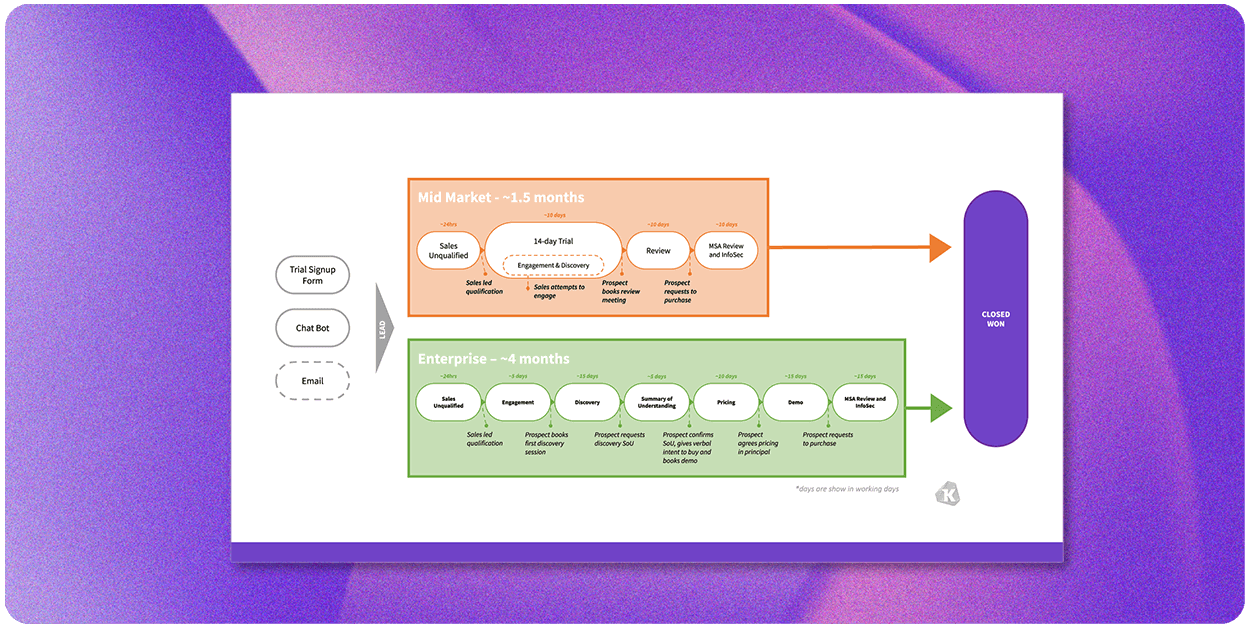
Task 3: Sharpen Your Axe
Time to get cutting. You will need to take an ax to your nearly completed deck to cut any content that isn’t absolutely vital. I know this because it happens every time I advise start-ups on their sales deck.
Often the deck is being put together by a founder or early employee. Someone that has been close to the product journey and has become very emotionally attached to it.
As a result, the slide decks typically have a surplus of product value, repeated value propositions, and other “but some buyers care about this” shot-in-the-dark slides.
Take out anything that takes away from that clear vision.
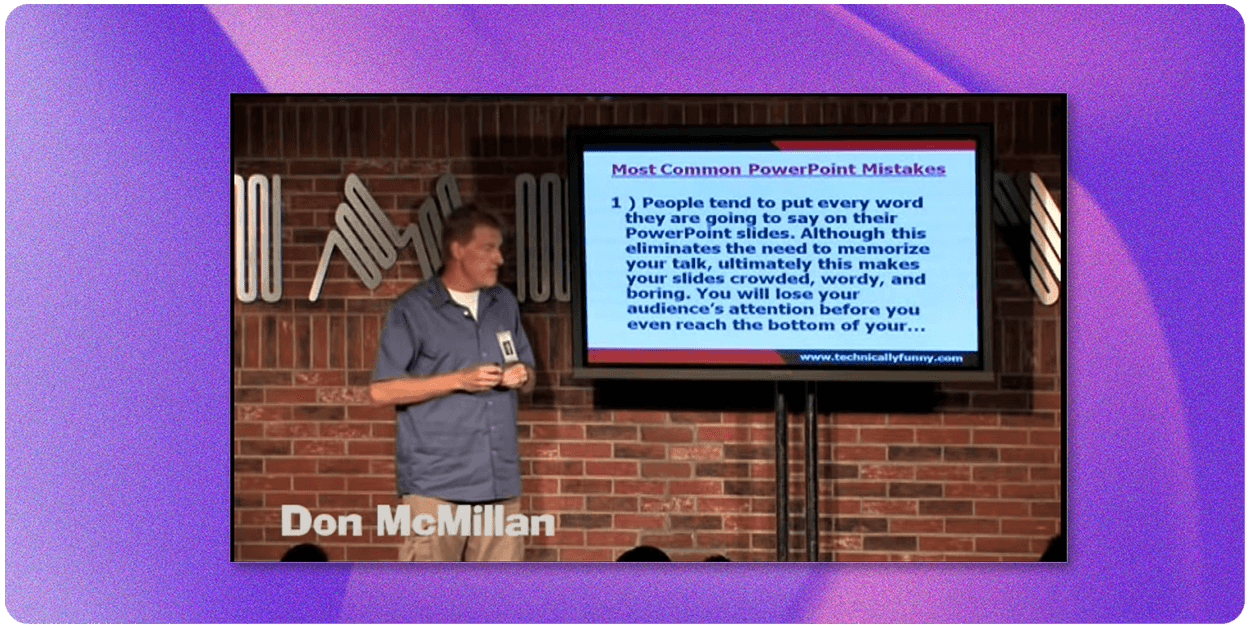
Let’s Start Building
You’ve completed the prep! Now comes the fun part (right?).
The sales deck plays a critical role in your early meetings with a prospect. Not only are you telling them about your product, but you’re also answering their internal questions, including:
- Are you a salesperson with a big ego (usually evident from a slide about you and your background)?
- Are you a salesperson who lacks belief in the solution (usually evident by too many slides about the company and not the solution)?
- Are you a salesperson who lacks knowledge of the platform (usually evident by lots of customer reference slides in place of solution slides)?
- Are you a salesperson who lacks attention to detail (evident by sloppy slides of different themes, fonts, and visual appearances)?
- Are you a lazy salesperson who doesn’t care about your prospect (evident from dozens of slides covering everything but the kitchen sink)?
And all the conclusions they draw about you will directly impact how they feel about the company you represent.
In your first meeting, you’re setting the tone and creating emotion. This is not the meeting where you will convince them to buy your product. B2B software purchases are a project in themselves. They require stakeholders, budget approval, requirements scope, solution definitions, demos, and many other moving pieces. You will not sell your product in the first meeting, and trying can make you sound desperate.
The first meeting should aim to achieve two objectives:
- Set the tone that you are a professional, knowledgeable, friendly, and trustworthy person to work with. Your champion will hang their reputation on your solution if they buy it. They will rally the troops and stand up for you against the critics. They aren’t going to do any of this if they feel there is a chance you could let them down.
- Create emotion with your prospect. You are looking to establish your champion, and you need to stir the feelings of your champion enough that they feel compelled to take on the risk of this project and see this purchase (and probably deployment) through. You want to create just enough excitement in their belly that they leave the meeting itching to request time to work on your purchase and collect the decision-makers for the next session.
In my experience, excitement builds like a mountain, not a hill. It’s not a gradual rise and plateau. It’s a sudden increase with a sharp peak and can quickly wane.
To achieve peak excitement, you need to focus on one or two salient value props for your solution. You’re hoping to achieve peak excitement with your final slide and wrap the session then – that way, your prospect can run out of the room, back to their desk, and frantically start typing in Slack to tell all their colleagues about this great session they just had. This creates that initial buzz.
I’m not exaggerating either. If all has gone well, their next step will be to fill in the wider team. This is the beginning of your champion acting as the internal seller for you. That means the shared message is not delivered by you but by someone who has only spent 30-mins hearing about your solution. You have to make sure this message is concise and straightforward. For as long as possible, you want to control the narrative about your solution.
First Impressions
This is the first slide of our Kolide sales deck:
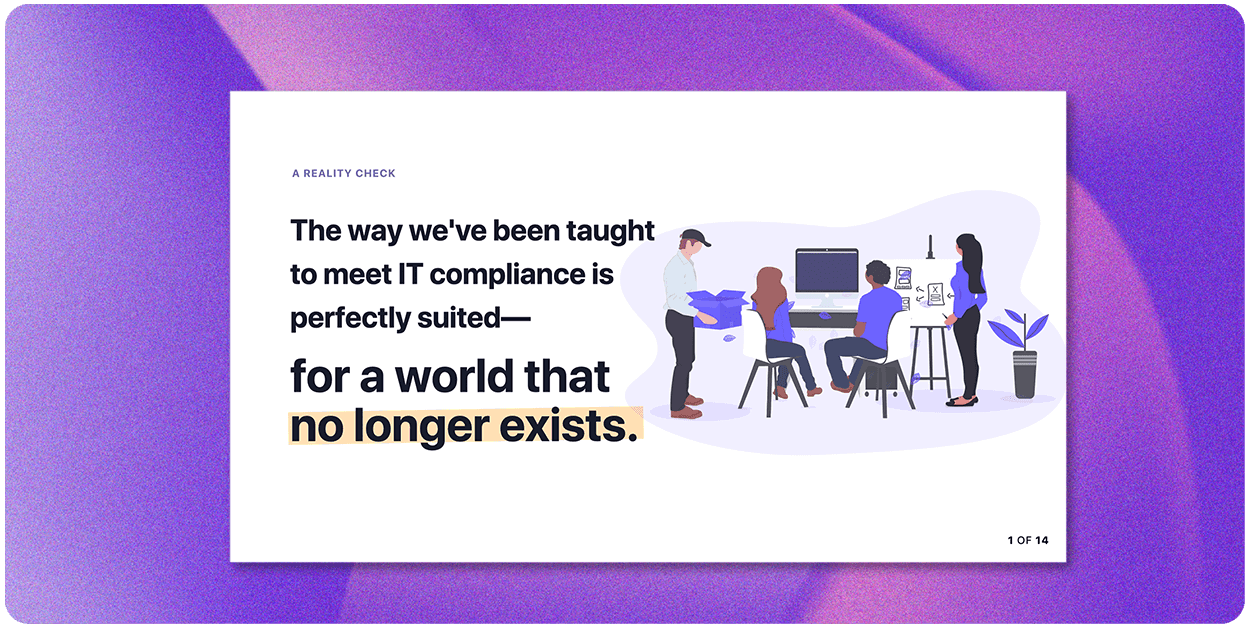
To be clear, there are no other slides before this slide. No title slide, no agenda slide, no maps of the world showing our office locations, no news articles of how much we’ve raised.
Why?
We are here to solve a problem for our prospects; why would we start anywhere else?
Also, odds are they simply don’t care.
And, if they do, a simple google search once back at their desk will address these questions, or they can ask. You should know the basic information; you just don’t need to waste a slide on it.
Agenda slides are a particular bugbear of mine. If your pitch deck requires a table of contents, it is too long.
A sales deck is a piece of theater. It’s a storytelling exercise that builds emotion with your audience and leaves them wanting more. It should flow seamlessly from one chapter to the next, and these chapter changes should be unrecognizable to the viewer. It’s not a collection of blocks put together.
I took inspiration for our deck from Dave Gerhardt at Drift. As Andy Raskin put it in his article on Dave’s deck:
Product differentiation, by itself, has become indefensible because today’s competitors can copy your better, faster, cheaper features virtually instantly. Now, the only thing they can’t replicate is the trust that customers feel for you and your team. Ultimately, that’s born not of a self-centered mission statement like “We want to be best-in-class X” or “to disrupt Y,” but of a culture whose beating heart is a strategic story that casts your customer as the world-changing hero.
Let’s talk about the Chapters that should be included.
Chapter 1: It’s Undeniable
Start with a big undeniable change that creates stakes. No matter what you’re selling, your most formidable obstacle is your prospect’s adherence to the status quo.
Your primary adversary is a voice inside people’s heads that goes, we’ve gotten along just fine without it, and we’ll always be fine without it.
Here is our Chapter 1:
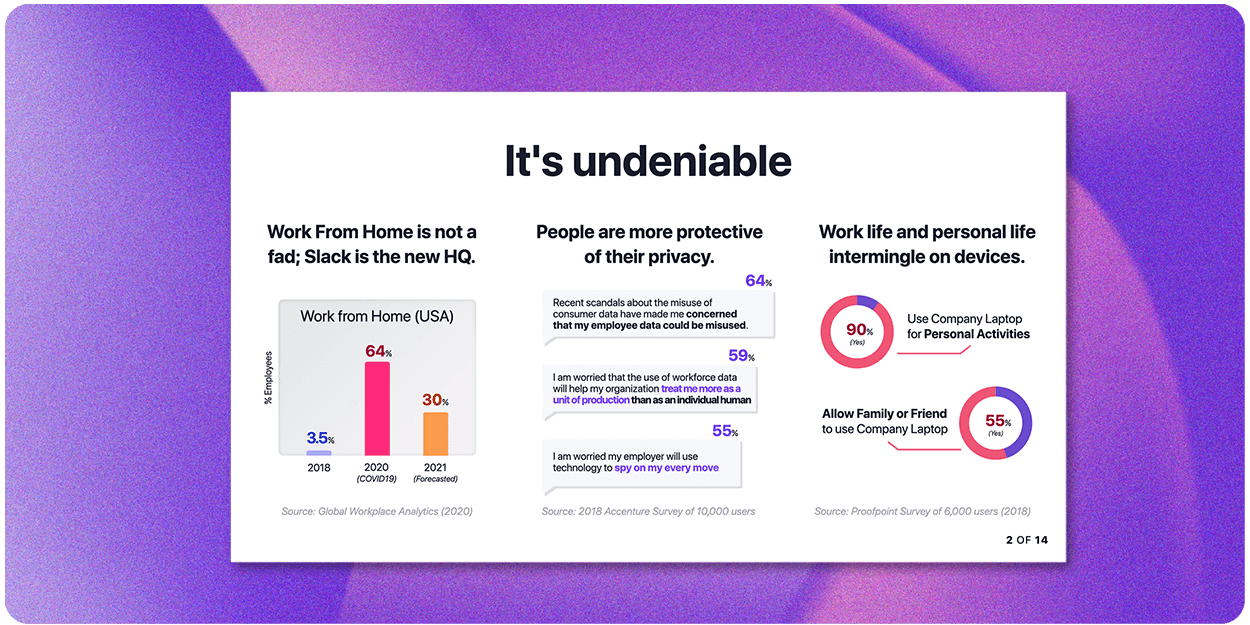
Note that we focus on three main points all about change:
- It’s undeniably happening
- It’s happening independently of Kolide — that is, whether Kolide exists or not.
- It gives rise to stakes
Do make sure that all three are accurate. This is their first indication of your character and, subsequently, your company’s character.
Chapter 2: Name the Enemy
Luke fought Vader. Batman fought The Joker. Marc Benioff squared off against software. One of the most powerful ways to turn prospects into aspiring heroes is to pit them against an antagonist.
Naming your prospect’s enemy differentiates you - not necessarily competitors (which comes off as “salesy”), but the old world that your competitors represent.
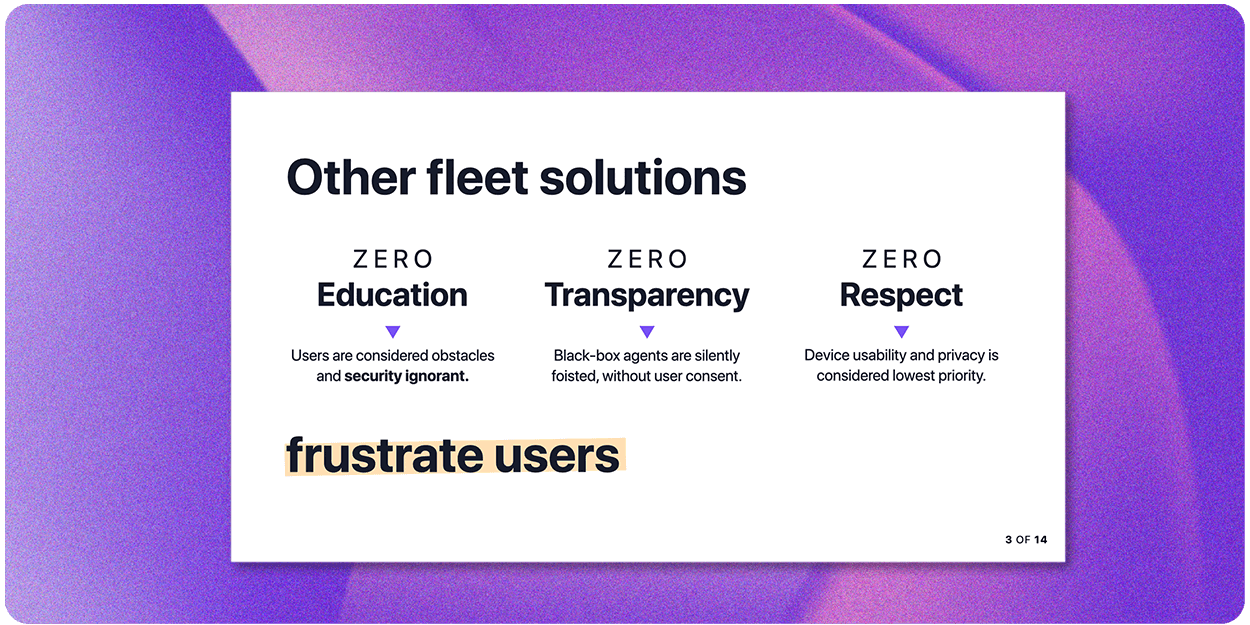
Chapter 3: Tease the “Promised Land”
In declaring the old way to be soon left in the past, we are planting a question in audiences’ minds:
How do I not get left in the past?
It’s tempting to answer that question by jumping right into your product and its capabilities, but you’ll be wise to resist that urge.
Instead, first, present a glimpse of the “Promised Land” - the state of winning in the new world. Remember, the win is not having your product - but the future that’s possible thanks to having your product.
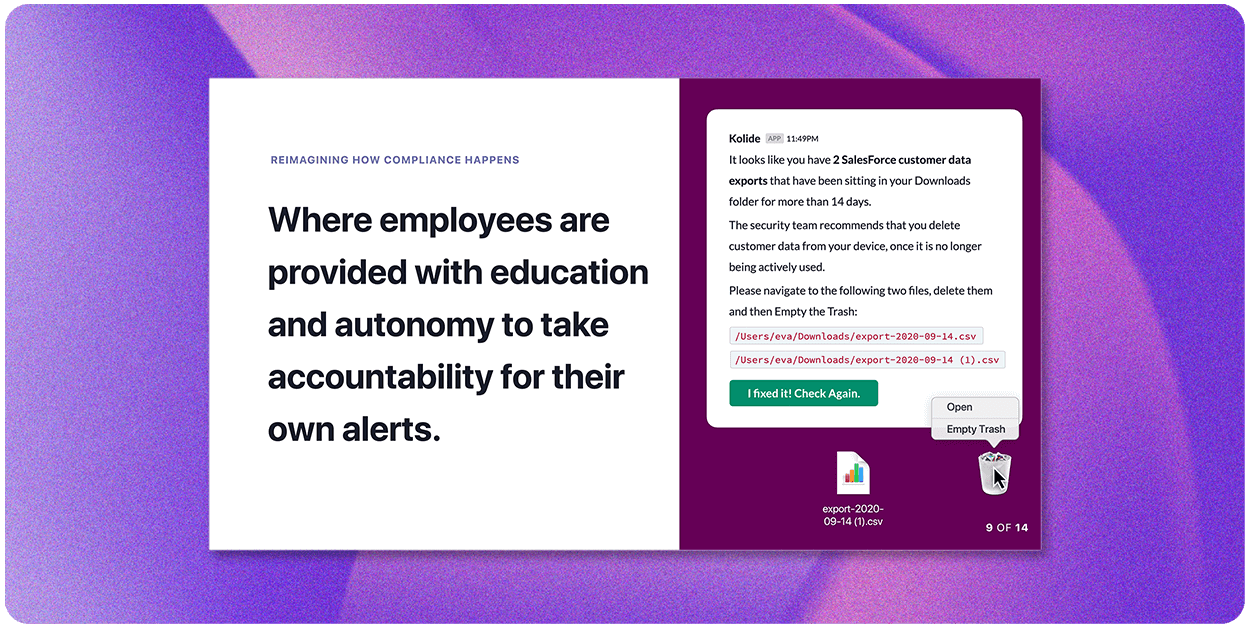
It’s wildly effective to introduce your Promised Land, so it feels like the audience is watching you think it through (“what we realized was”).
However you do it, your Promised Land should be both desirable and difficult for prospects to reach without you. Otherwise, why do you exist?
Chapter 4: Finally, how does your product help?
Once the audience buys into your Promised Land, they’re ready to hear about your capabilities. Position your product’s capabilities as magic for slaying monsters. You need to figure out your value following our heroes and villains scenario.
We value Obi-wan’s gift of a lightsaber precisely because we understand the role it can play in Luke’s struggle to destroy the Death Star.
So yes, you’re Obi-wan, and your solution is a lightsaber that helps Luke battle stormtroopers. It’s time to show them your lightsaber.
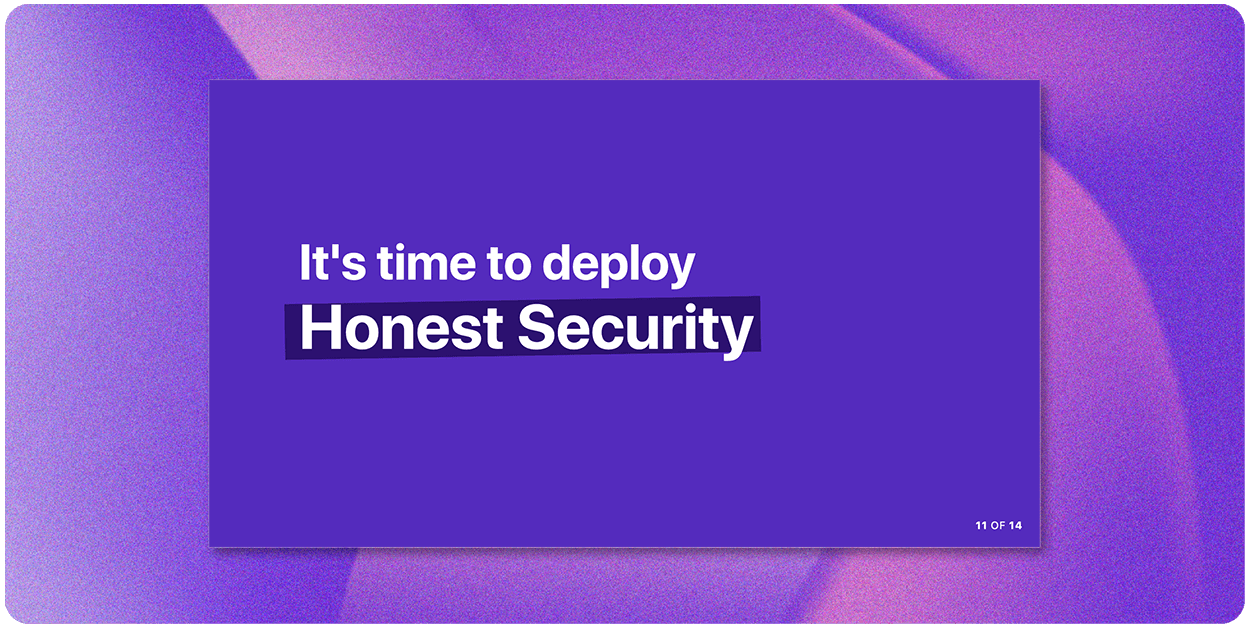
Chapter 5: Wrap it up
Enough with the “thank you” slides. I see these time and time again. What are you thankful for? Are you thankful that you gave an hour of your time to visit/present some free expert advice and introduce them to a solution that could have a substantial positive impact on their work?
Saying thank you after your presentation changes the dynamic; you’re there to give them something they already need. Don’t unnecessarily subordinate yourself.
You are a professional seller, doing a professional job; of course, you are grateful for their time, as they are for yours. It’s mutual, and it doesn’t need its own slide.
Better, end with a question.
What Next?
“Can you send over a copy of these slides?”. If you’re hearing this often, it means your deck is too complicated. If your message is clear and your chapters tie together, you won’t get asked for this deck. They should be able to remember your vision.
Alas, no matter how good your deck is, occasionally, you will get asked for a copy of your deck as it’s an automatic response for many after a presentation. In all cases, I say no (not always straight away in front of others but discreetly afterward).
There are only two reasons someone wants a copy of your deck:
- They genuinely love the design and want to write a blog like this about it
- They want to take others through the presentation
At this early stage in the deal, you want to keep control of the narrative and own the introductions to other stakeholders. Your prospect will never present this deck as well as you, so keep it sacred and offer to present it to as many stakeholders as required.
Push for those additional sessions, and don’t give away your leverage to those sessions. I’ve seen it happen time and time again. The prospect takes your beautiful deck, merges into their slides, breaks your fonts, changes your colors, deletes a slide here and there, and suddenly, your company and solution look nothing like how you want them to. Don’t let it happen to you.
You’ve created your ideal customer, formulated a slide deck dedicated to your champion, presented a problem, demonstrated a possible Promise Land without the problem, and the path to that Promise Land. You have now created an engaging, informative, and inspiring slide deck.




